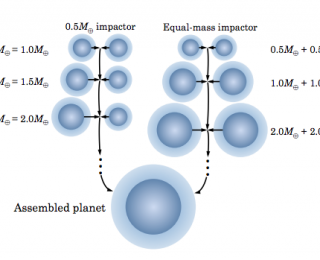
by Jaime Green | Mar 4, 2015 | Daily Paper Summaries
Hot Jupiters are weird and lonely. Is gravitational perturbation to blame?

by Jaime Green | Dec 31, 2014 | Daily Paper Summaries
Super-Earths could form close-in to their stars… but what about their atmospheres?

by Jaime Green | Apr 23, 2014 | Daily Paper Summaries
Earth and its Solar System compatriots all have nearly circular orbits, but many exoplanets orbit their stars on wildly eccentric paths. Is our home system strange? Or is our sense of the data skewed?
by Nathan Sanders | Nov 28, 2011 | Daily Paper Summaries
The latest episode in the saga of GJ1214b appeared on the arXiv Wednesday.

by Lauren Weiss | Sep 21, 2011 | Guides, Personal Experiences
When we dream of other worlds, there is one thing that drives our fantasies of life above all else: water. Most organisms on Earth rely on this molecule for survival. Although we might imagine life forms that do not require water, planets with water are the most obvious places to search for life—or at least for life as we know it.Thus, the discovery of the first potential “water world” in 2009 was a turning point in exoplanet science. At the time, I was a senior at Harvard University working with David Charbonneau, whose team and their robotic telescopes discovered the super-Earth GJ 1214b when it transited its star. In a Nature publication, Dave describes the discovery.The planet is just the right density to be made entirely of water. However, the discovery of GJ 1214b only suggests its watery nature; the planet could have a dense, rocky core and a large but light atmosphere of hydrogen and helium instead.To distinguish between these possibilities, several groups have performed transmission spectroscopy. This technique measures the starlight that passes through the planet’s atmosphere while the planet transits its star. By measuring the light transmitted at different wavelengths, it is possible to construct a spectrum of the planet’s atmosphere. Absorption and emission lines in the spectrum can reveal chemicals in the atmosphere.Counter-intuitively, the scientists studying GJ 1214b are not looking for spectral lines due to water. Models show that adding water vapor to the atmosphere of GJ 1214b would flatten the spectrum, smearing out all features. However, a high layer of clouds could also produce such a spectrum, so a flat spectrum does not...




